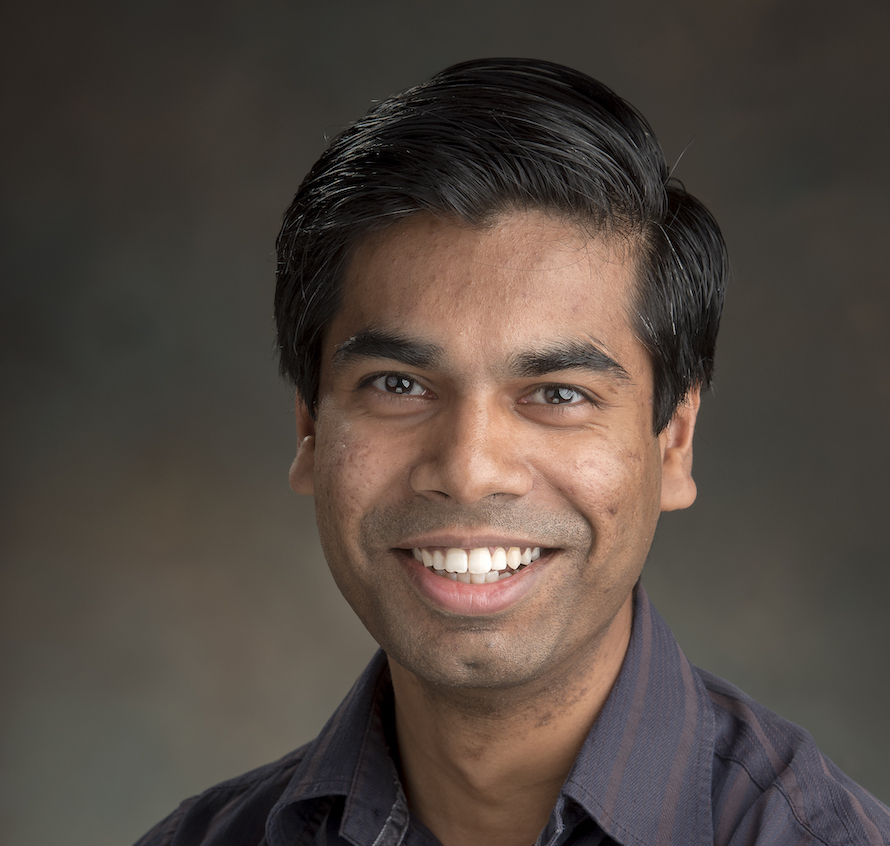
Ghosh Hajra, Sujoy

Sujoy Ghosh Hajra
Assistant Professor | College of Engineering and Science: Biomedical Engineering and Science
Contact Information
HSR 328
Personal Overview
Dr. Sujoy Ghosh Hajra is a biomedical engineer and health technology and neuroergonomics researcher with extensive experience across academia, national laboratories, and industry settings. His research focuses on creating technological innovations for improving our understanding of brain and body health. He has published 32 peer-reviewed journal articles, 42 conference presentations, and 4 technology patents. In addition, Dr. Ghosh Hajra helped build Simon Fraser University’s first clinically-embedded research hub, and was the Principal Investigator in securing $1.45M research funding to develop new assessment tools in aging health, and has been vital in commercializing several of his research advances. He is also passionate about training the next generation of leaders, and has co-founded and directed an internationally award-winning, experiential learning-based student training program and mentored students and early-career researchers. Dr. Ghosh Hajra serves on several peer-reviewed journal boards, and his technical and leadership achievements have been recognized through numerous national and international awards.
Currently recruiting undergraduate and graduate research assistants - please contact Dr. Hajra at shajra@fit.edu for additional information.
Educational Background
Ph.D., Biomedical Engineering, Simon Fraser University, Canada
B.A.Sc., Computer Engineering, University of Toronto, Canada
Professional Experience
August 2023-Present, Assistant Professor, Biomedical Engineering, Florida Institute of Technology, USA
2022-2023, Manager of Applied Research, NorQuest College, Canada
2021-2022, Associate Research Officer, National Research Council Canada, Canada
2019-2021, Assistant Research Officer, National Research Council Canada, Canada
2013-2019, Chief Technology Officer, Surrey NeuroTech Lab, Canada
2008-2013, Research Engineer, National Research Council Canada, Canada
Current Courses
BME 1045: Introduction to Biomedical Engineering
BME 4050/5790: Biomedical Data Science & AI
Selected Publications
Selected Publications
- Ghosh Hajra, S., Liu, C. C., Song, X., Fickling, S., Liu, L. E., Pawlowski, G., ... & D'Arcy, R. C. (2016). Developing brain vital signs: initial framework for monitoring brain function changes over time. Frontiers in neuroscience, 10, 211.
- Ghosh Hajra, S., Xi, P., & Law, A. (2020, October). A comparison of ECG and EEG metrics for in-flight monitoring of helicopter pilot workload. In 2020 IEEE International Conference on Systems, Man, and Cybernetics (SMC) (pp. 4012-4019). IEEE.
- Ghosh Hajra, S., Liu, C. C., Song, X., Fickling, S. D., Cheung, T. P., & D’Arcy, R. C. (2018). Accessing knowledge of the ‘here and now’: a new technique for capturing electromagnetic markers of orientation processing. Journal of Neural Engineering, 16(1), 016008.
- Ghosh Hajra, S., Liu, C.C., Law A. (September 2021). Neural responses to spontaneous blinking capture differences in working memory load: Assessing blink-related oscillations with N-back task. In 2021 International Neuroergonomics Conference.
- Frizzell, T. O., Glashutter, M., Liu, C. C., Zeng, A., Pan, D., Ghosh Hajra, S., ... & Song, X. (2022). Artificial intelligence in brain MRI analysis of Alzheimer’s disease over the past 12 years: A systematic review. Ageing Research Reviews, 77, 101614.
- Sattari, S., Kenny, R., Liu, C. C., Ghosh Hajra, S., Dumont, G. A., & Virji-Babul, N. (2023). Blink-related EEG oscillations are neurophysiological indicators of subconcussive head impacts in female soccer players: a preliminary study. Frontiers in Human Neuroscience, 17.
Selected Conference Proceedings/Abstracts
- Sattari S, Kenny R, Liu C, Ghosh Hajra S, Virji-Babul, N. (October 2022). Blink-related oscillations capture neurophysiological impairments due to subconcussive head impacts in contact sports. 6th International Consensus Conference on Concussion in Sport.
- Ghosh Hajra S, Liu C, Law A. (June 2021). Spontaneous blinking as a new window into brain function: In-flight monitoring of blink-related oscillations. Canadian Space Agency Lunar Workshop.
- Arvan, T., Sepheri, K., Ghosh Hajra, S., Pawlowski, G., Fickling, S., D’arcy, R. C., & Song, X. (2020). A portable brainwave technology in detecting functional brain changes in aging and dementia: A pilot study on feasibility of the application in residential care older adults: Neuroimaging/New imaging methods. Alzheimer's & Dementia, 16, e038658.
- Grajauskas, L. A., Frizzell, T., Ghosh Hajra, S., Liu, C., Song, X., & D'Arcy, R. C. (2020) White matter neuroplasticity: Motor learning modifies hemodynamic responses in the internal capsule. In Organization of Human Brain Mapping (HBM) Conference.
Recognition & Awards
Selected Research Grants
- Aging-in-Place Challenge Program, National Research Council Canada
- Role: Principal Investigator
- New Beginnings Grant, National Research Council Canada
- Role: Principal Investigator
Selected Awards
- Best Reviewer Award, International Neuroergonomics Conference.
- Young Engineer Award, Professional Engineers Ontario (Ottawa).
- Spirit of Canada150 Award, House of Commons.
- Global Best Award - North America & Global Best Award - Worldwide for STEM Education. International education-business partnership network and Conference Board of Canada.
Research
Our research at the convergence of biomedical engineering, neuroscience, and human factors focuses on understanding the relationship between non-invasive assessments of neural and physiological activity and the cognitive and physiological state of the person. This research spans basic science (e.g. identification of new imaging biomarkers), technology development (e.g. creation of portable non-invasive technologies), clinical research (e.g. at patient bedside), and real-world demonstrations (e.g. in-aircraft pilot monitoring). Our research combines advanced tools such as functional near infrared spectroscopy (fNIRS), electrocardiography (ECG), electroencephalography (EEG), and transcranial direct current stimulation (TDCS) with engineering techniques (e.g. signal processing, machine learning, etc.) to create novel portable technology-based solutions, with the aim of both advancing our understanding of brain and body function as well as improving patient clinical outcomes and optimizing human performance in high-risk settings such as aviation and space.
Sample previous and on-going projects include the invention of vital signs for the brain, identifying new imaging-based biomarker to detect higher-level cognitive functions, development of novel signal processing techniques for complex environments such as aircrafts, improving the assessment of patients with disorders of consciousness, and developing the first machine learning-based assessment of helicopter pilots’ workloads using physiological data.

 Give to Florida Tech
Give to Florida Tech